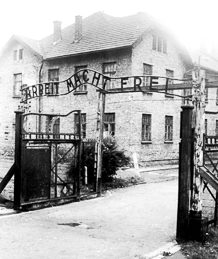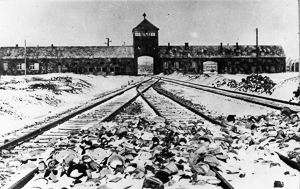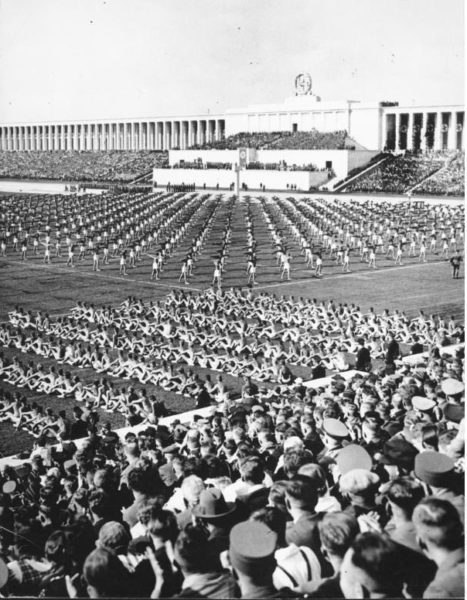
At the age of 25, he stepped off the first transport train carrying Jews to KL Auschwitz II-Birkenau in April 1942. Lale Sokolov (1916−2006), then known as Ludwig “Lale” Eisenberg, was soon to exchange his name for a number. He would never be allowed to forget the number—32407—as it was tattooed on his arm. Before long, Lale would take over the duties from the prisoner who tattooed his arm and begin almost three years as the camp’s primary tetovierer (tattooist). Several months later, Lale would tattoo 34902 onto the arm of his future wife.
Did You Know?
The Dachau concentration camp opened in March 1933 and did not cease operations until April 1945. It was the first camp established under the Nazi regime and the only one to survive the entire twelve years of the Third Reich. It was built to hold political prisoners (as time went on, Polish prisoners would dominate the camp’s population). Dachau was never intended to become an industrialized extermination camp such as Auschwitz II-Birkenau. Dachau deaths were primarily from beatings, malnutrition, disease (e.g., typhus), and suicide. It is impossible to accurately assess the final number deaths attributed to Dachau.
KL Auschwitz
The main camp known as Auschwitz I was built in May 1940 in the newly annexed area of Poland. It was originally constructed to house Polish political prisoners. By September 1941, exterminations had begun and the Nazis determined a second camp was needed. So, by March 1942, a sub-camp named Auschwitz II-Birkenau was completed with its first gas chamber.

Nazi plans for the Final Solution had been finalized in January 1942 and by early 1943, Himmler decided to expand Birkenau and increase its capacity as an extermination camp. It is estimated that 1.3 million people were sent to Auschwitz with 1.1 million murdered. More than 90 percent or 1.0 million of the people murdered here were Jews (in other words, one in six Jews who perished in the Holocaust were murdered at Auschwitz). Watch a short documentary on Auschwitz. Read More The Auschwitz Tatooist

